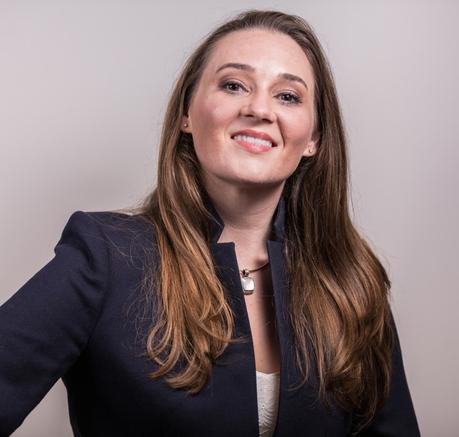
If you have followed this blog for a while, you know how much I love old-fashioned photography. You may even remember how I started my series of reminigrams.
Earlier this year, I met photographer Michelle Murosky on Instagram. This family historian and genealogist restores old images. After perusing her blog, I knew she would make a fascinating guest for the blog. So, I invited her to answer my questions.
I am very excited to share her answers with you below.
Cendrine Marrouat: Hello Michelle, thank you for answering my questions. First, tell us a little about you.
Michelle Murosky: Hello there! My My husband Bob and I live in Aurora, Illinois. Together we own and operate MB Boutiques a small business offering photography and family history services.
We are both photographers. Bob specializes in landscape, automotive and studio photography. I enjoy nature photography with an emphasis on fine art photography and flowers.
Together we specialize in Reproduction Photography. We sell MB Boutiques blank note cards - which feature both of our work. We also work with other small businesses and creatives to provide custom printing services ranging from business cards, note cards and prints.
CM: What triggered your desire to work as a family historian? Any specific story?
MM: My paternal grandmother, Mary Eugenia McDonald, passed away when I was in high school. After her death her siblings said, "We should have written all those stories down - Mary Jean knew all the family history." For me that was the trigger.
Following my grandmother's death I spent a lot of time with my grandfather Arthur Murosky. It all started with a notebook and a pen, following Grandpa around asking questions. It has been an incredible journey learning more about the family over the years.
CM: Your company, MB Boutiques, offers all sorts of photography services. Among them, you restore old images. How difficult is the process?
MM: My family is very fortunate in that we have a very large collection of old family photographs. Over the last several years I have restored over 500 original family photographs with the assistance of my husband. The method that we use is to re-photograph the original photograph using a DSLR camera. Re-photographing the original allows the image to be printed at a larger scale while the resolution is maintained. Copies can be printed and displayed while the original image can be properly archived. The ultimate goal is to preserve the original photograph.
The setup phase can take some time as it is important to have the correct lighting. The most difficult part of the process would the editing - especially if the original image has been torn or wrinkled. With time and patience an image that has been damaged can be digitally restored.
CM: Among all the photos you have restored for clients, does one stand out? And why?
MM: Earlier this year we worked with a client to restore old family photographs that were taken in Germany prior to WWII. The photographs are some of the family's most treasured possessions. When the family departed Germany for the United States they brought the photographs with them. It was an honor to preserve their family heritage. My client used the restored photographs as gifts which were a big hit with the recipients!
CM: I love tintypes and old, black-and-white photos in general. I feel that they tell stories that modern photography never could. When working on those images, what is the first thing you look at? And what do you wish to achieve?
MM: Old photographs certainly have a story to tell! I always feel that they have the ability to transport us to a different time and offer a glimpse in to the past. Life is very different today.
When I first look at a photo I try to identify the focal point in the original image - where is your eye first drawn?
Our goal with restoring old photographs is to preserve as much of the original photograph as possible. Spots and scratches are removed. Subtle edits are then made if required to enhance the original image while maintaining the focal point.
CM: There are many different types of early photography processes. Which one do you prefer and why?
MM: While tintype photographs are really very fascinating my personal favorites are the cabinet cards.
Several of the cabinet cards in our family collection have very detailed, exquisite borders. Some are embossed and others are printed. There is attention to detail and the elegance of the turn of the century. The images still look fantastic almost 100 years later!
CM: Your blog, Our Ancestors - The Murosky & McDonald Ancestral Lines, gives readers information about your family history. What is the most interesting thing you have learnt so far?
MM: One of my favorite stories involves my 2nd Great Grandfather, Joseph William Selker. In 1906 he returned to Germany - it was his first and only trip to his birth country after departing 21 years prior. He traveled with his 9 year old son Frederick William Selker. The two traveled to three different cities to visit their relatives. Two of Joseph William Selker's nieces, Johanna Anna Selker and Philomena Selker, returned to Pennsylvania with him. The girls remained in Pennsylvania for the rest of their lives.
One of our cherished family heirlooms is a copy of an original letter written in German that Joseph William wrote to his brother Karl Friedrich Selker. Joseph William penned the letter after returning from the trip. The letter shares details of their trip and is filled with emotion. A copy of this letter is highlighted in " JW Selker: A Letter to Germany."
CM: Anything you would like to add?
MM: Thank you so much for this opportunity to collaborate!
For more information on Michelle Murosky, visit http://www.mbboutiques.com/. She is also on Instagram. Interested in being featured in an upcoming post? Feel free to contact me.
